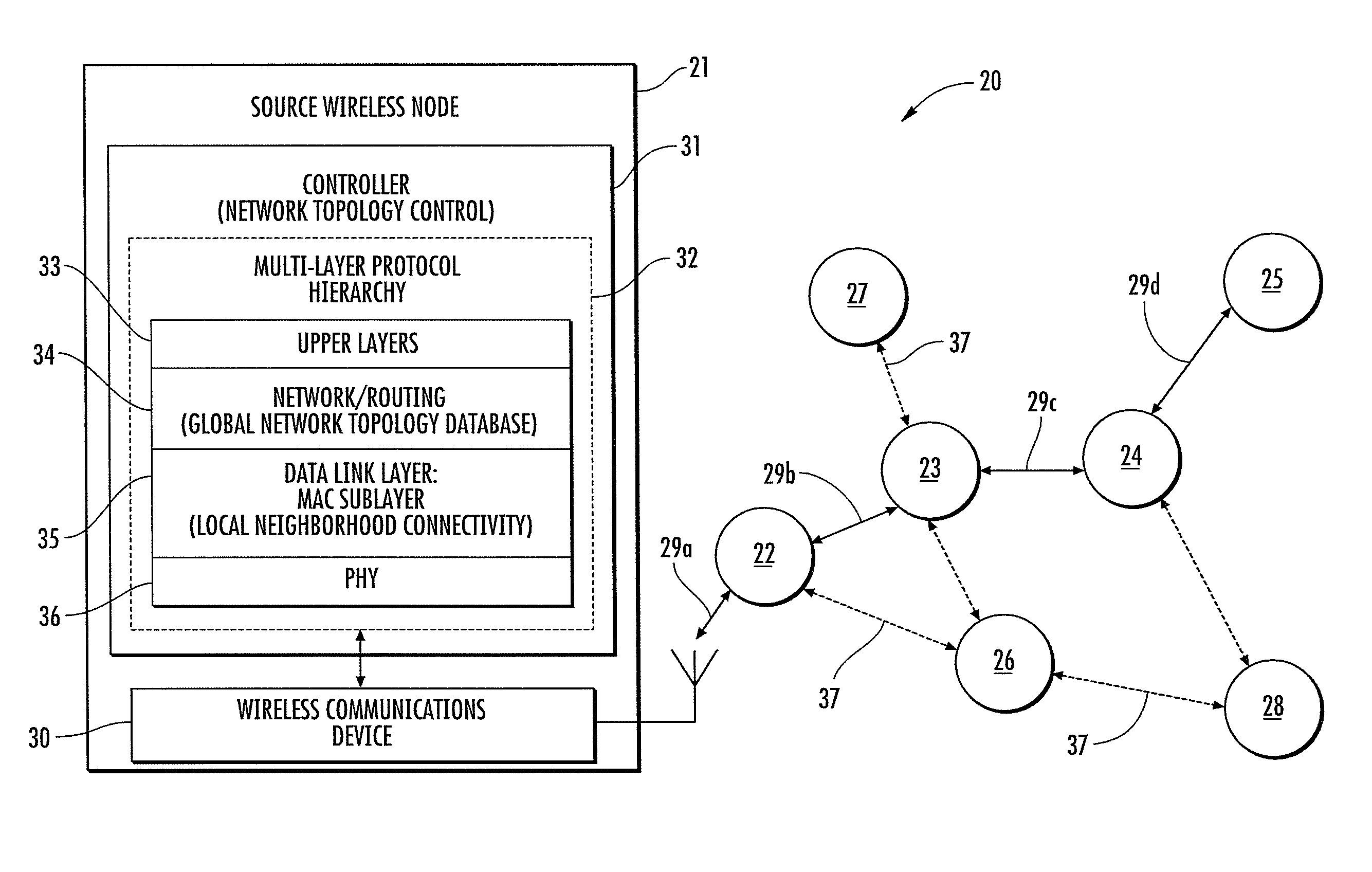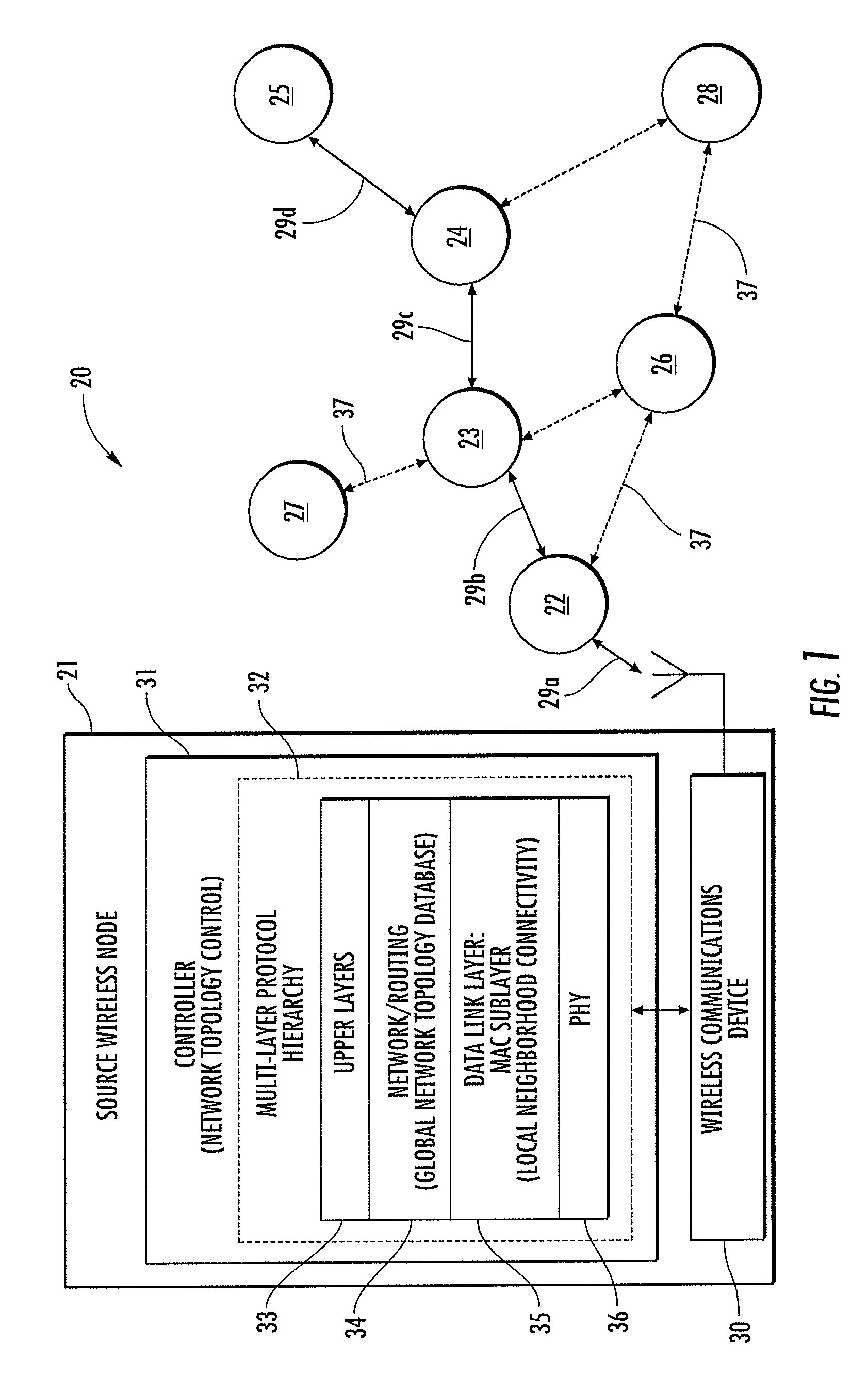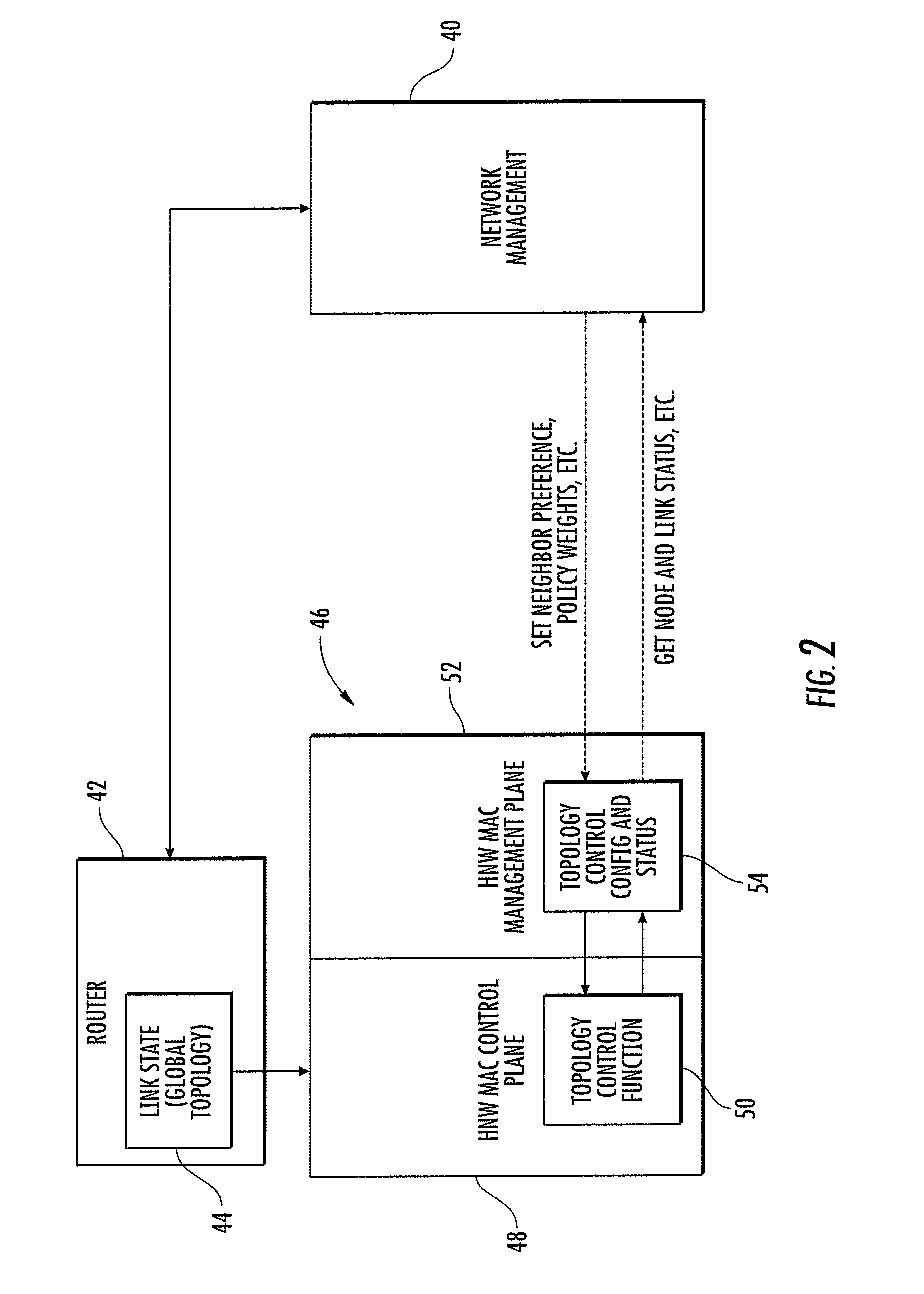Network layer topology management for mobile ad-hoc networks and associated methods
a network layer and topology management technology, applied in the field of wireless communication networks, can solve the problems of limited communication and computation capabilities, limited system bandwidth, and serious challenges of mobile ad hoc networks, and achieve the effect of improving qos, latency and resistance to link and node failures
- Summary
- Abstract
- Description
- Claims
- Application Information
AI Technical Summary
Benefits of technology
Problems solved by technology
Method used
Image
Examples
Embodiment Construction
[0021]The present invention will now be described more fully hereinafter with reference to the accompanying drawings, in which preferred embodiments of the invention are shown. This invention may, however, be embodied in many different forms and should not be construed as limited to the embodiments set forth herein. Rather, these embodiments are provided so that this disclosure will be thorough and complete, and will fully convey the scope of the invention to those skilled in the art. Like numbers refer to like elements throughout.
[0022]Referring initially to FIG. 1, a snapshot of a MANET 20 in accordance with the present invention will now be described. The MANET 20 illustratively includes a plurality of nodes, such as mobile nodes 21-28. In the illustrated example, the mobile node 21 functions as a source node, while the mobile node 25 functions as a destination node with which the source node seeks to communicate. The nodes 21-28 may be any suitable type of wireless device or mob...
PUM
 Login to View More
Login to View More Abstract
Description
Claims
Application Information
 Login to View More
Login to View More - R&D
- Intellectual Property
- Life Sciences
- Materials
- Tech Scout
- Unparalleled Data Quality
- Higher Quality Content
- 60% Fewer Hallucinations
Browse by: Latest US Patents, China's latest patents, Technical Efficacy Thesaurus, Application Domain, Technology Topic, Popular Technical Reports.
© 2025 PatSnap. All rights reserved.Legal|Privacy policy|Modern Slavery Act Transparency Statement|Sitemap|About US| Contact US: help@patsnap.com



